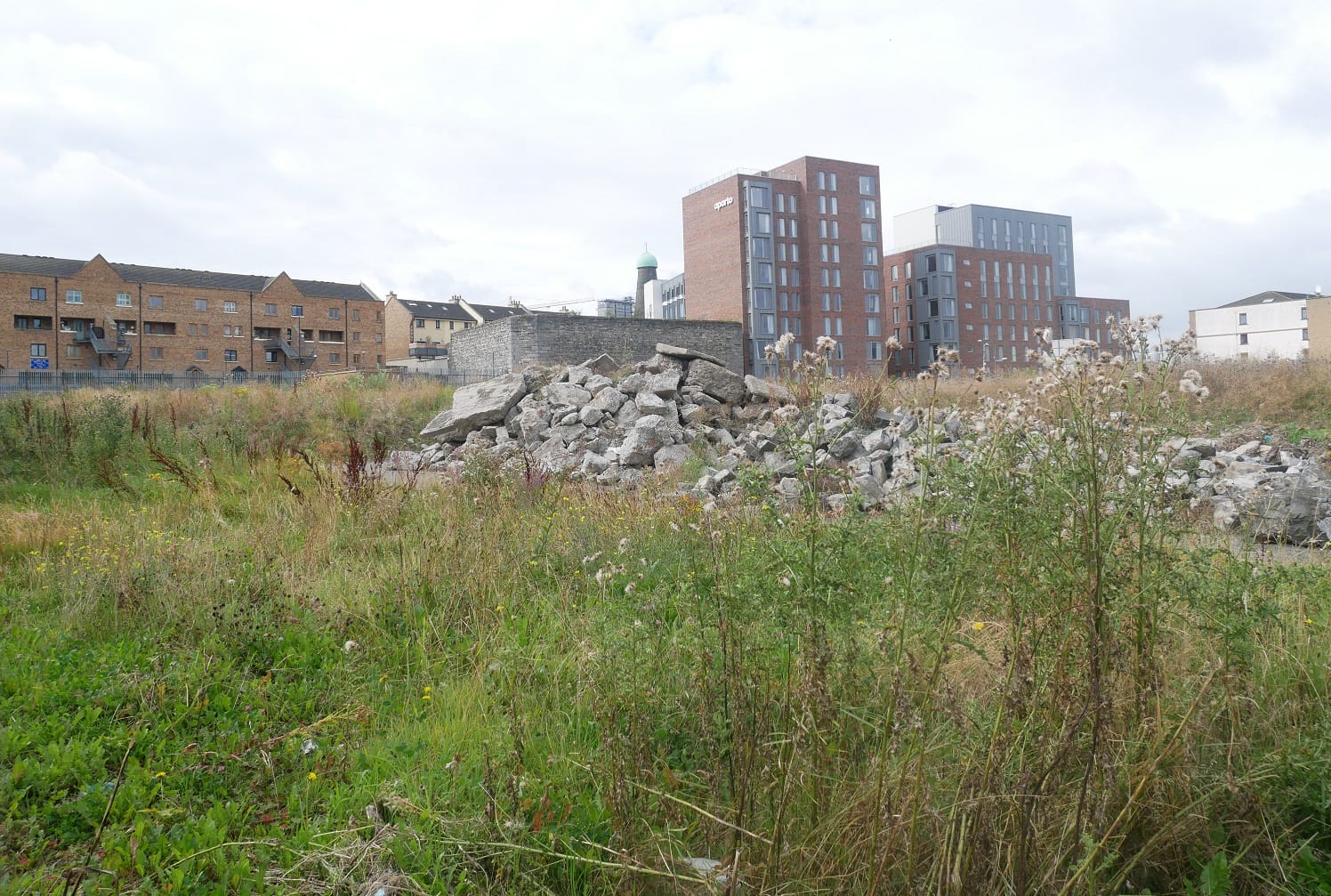What’s the best way to tell area residents about plans for a new asylum shelter nearby?
The government should tell communities directly about plans for new asylum shelters, some activists and politicians say.
Local residents and councillors have grown concerned about delays. But the council’s head of planning, Richard Shakespeare, says work could start as soon as late October.

It’s been more than two years since councillors agreed plans for a park on Bridgefoot Street, after a long community campaign.
On a recent Friday, the site was quiet. Tall railings run around the perimeter. In the middle was a pile of giant concrete slabs.
“It’s terrible. The whole area looks rundown,” said Tony O’Rourke, who runs a cafe that sits catty-corner to one end of the land.
He is also part of the campaign for the park. “When are they going to do something?” he asks.
Richard Shakespeare, the council’s head of planning and property development, said a contractor has been procured and works could start in late October.
“We will not know the exact schedule of the project until that is received from the contractor,” he said, by email.
While that sounds straight-forward, some councillors say they had struggled to pin down exactly what was going on.
Hints that the project’s progression was tied to public-land sales has deepened frustration at the way neighbourhood amenities such as these are funded, they say.
In late 2017, councillors voted to press ahead with ambitious plans for the Bridgefoot Street Park, the designs for which show play and performance spaces, hard and soft landscaping, and space for allotments.
Council officials had said they wanted the lot for housing, but reached a compromise with locals, rolling up plans for the park with plans for some social homes on a parcel of land off Bonham Street to the west side of the park site.
A contract was awarded in August for 57 “rapid-build” social homes there and that project is expected to be done by the second quarter of next year, a recent council report says.
“They said if we didn’t object to the building, we would get a park,” says O’Rourke, last week. Yet, there’s been little concrete information on when that would finally happen, he says.

Zoe Obeimhen, a local resident, says she has noticed work on the site. Debris was cleared away, and the site secured, she says.
In March this year, she put in a complaint that the council by not building the park, was violating children’s “right to play” – pointing to the rights of children set out in the EU Charter of Fundamental Rights.
“It’s about the children and the future of the area,” she said.
Shakespeare, the council’s planning head, said that after the plans were voted through under the process known as Part VIII, it went to detailed design, then out to tender – which accounts for the two-year gap.
A council report from this month says the tenders have been assessed but that “construction [is] subject to funding”.
People Before Profit Councillor Tina MacVeigh said she’s been told different things from different wings of the council about funding, and whether the money was there or not for the park.
Last time she asked council managers, she was told they were trying to get the last of the funding.
“And that it doesn’t help when we vote not to sell off land, including Harcourt Road,” said MacVeigh – a reference to the sale of land on the corner of South Richmond Street further east in the city, which councillors first refused, but then backtracked on earlier this week and agreed.
On Tuesday, Shakespeare, the council’s head of planning said the money for Bridgefoot Street Park is there, drawn from development levies and council capital funds. “Which includes income from sale of assets.”
But he didn’t say whether it was directly linked to the Harcourt Road sale, or not.
MacVeigh, of People Before Profit, says she finds it frustrating that there’s pressure on councillors to sell land, a valuable state asset, to fund much-needed public and community amenities.
The national government should be properly funding this infrastructure so councillors don’t have to sell off land too, she said.
She wondered where the development levies – charged by the council to developers when they get planning permission to help pay for public infrastructure in the area– are going, as student housing and hotels rise up in the wider neighbourhood, she says.

Sinn Féin Councillor Críona Ní Dhálaigh says that when councillors voted in May against selling a plot of land on Harcourt Road and South Richmond Street, officials warned of a knock-on impact.
“We were told that some of the proposed park projects could be delayed,” she said. “But on the other hand, it’s unacceptable that the council needs to dispose of land to get parks.”
She has tried to ask whether the council is applying for other funding streams, from European Union pots of money, for example.
Ní Dhálaigh has a question in for the next meeting of the South Central Area Committee, she says, asking what funding the council has applied for to cover the cost of all the infrastructure projects in the Liberties.
“The reason I asked is because of this constant threat,” she said.